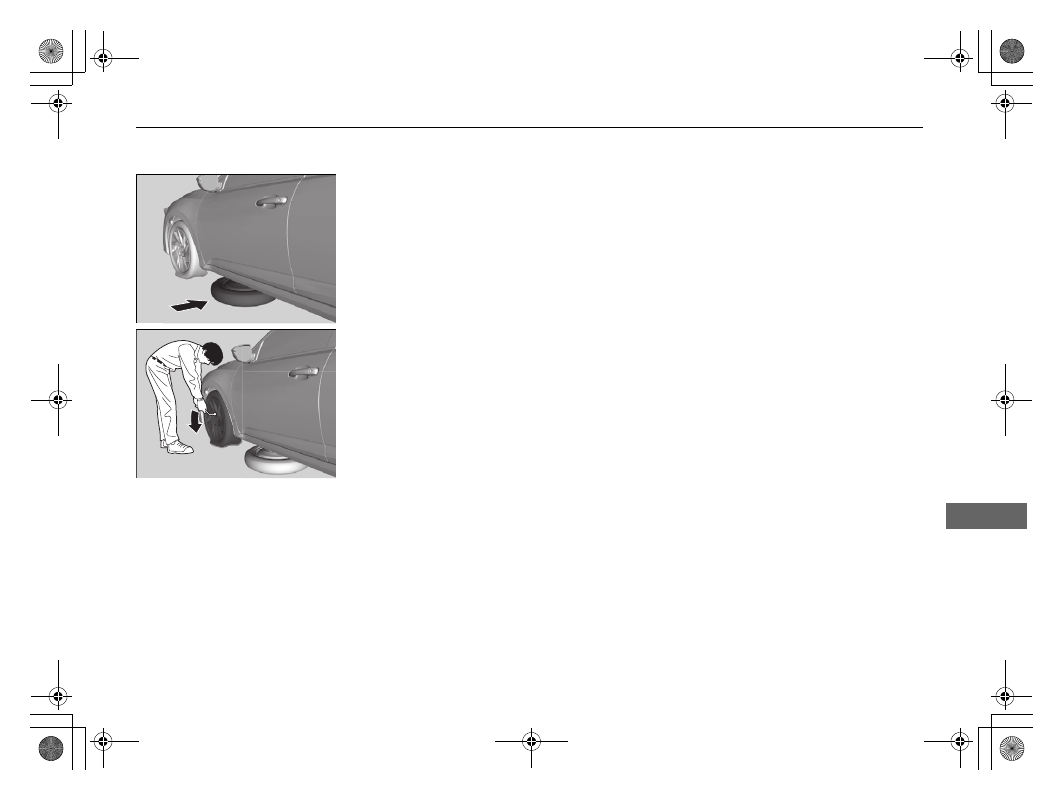Honda Insight (2019 year). Manual - part 39

607
uu
If a Tire Goes Flat
u
Changing a Flat Tire
Continued
Han
d
lin
g the U
n
expected
6. Place the compact spare tire (wheel side up)
under the vehicle body, near the tire that
needs to be replaced.
7. Loosen each wheel nut about one turn
using the wheel nut wrench.